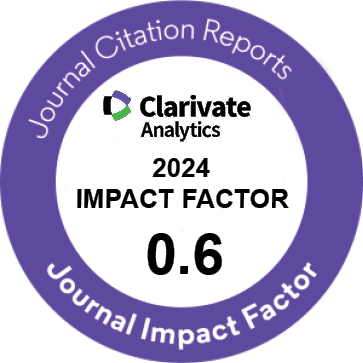| Original Article | |
| Effects of Changing GnRH Agonist to Antagonist or Vice Versa on M2 Oocytes, Clinical Pregnancy and Live Birth Rates in Two Consequent IVF Cycles | |
| Fatemeh Farjad Bastani1, Malihe Amirian1, Malihe Mahmoudinia1, Negar Morovatdar2, Malihe Afiat1, Nayereh Khadem3, Forough Yeganeh4, Roya Nasiri51, Seyedeh Yasaman Rezaei6, Aryan Payrovnaziri7 | |
| 1Supporting of the Family and the Youth of Population Research Core, Department of Obstetrics and Gynecology, Faculty of Medicine, Mashhad University of Medical Sciences, Mashhad, Iran 2Clinical Research Development Unit, Imam Reza Hospital, Mashhad University of Medical Sciences, Mashhad, Iran 3Imam Reza Hospital, School of Medicine, Mashhad University of Medical Sciences, Mashhad, Iran 4Department of Obstetrics and Gynecology, Faculty of Medicine, Mashhad University of Medical Sciences, Mashhad, Iran 5Department of Obstetrics and Gynecology, Islamic Azad University, Mashhad Branch, Mashhad, Iran 6Medical Faculty Mannheim/Heidelberg University, Mannheim, Germany 7School of Medicine, University of Central Lancashire (UCLan), Vernon Building, Adelphi Street, Preston, Lancashire PR1 2HE, United Kingdom |
|
|
DOI: 10.15296/ijwhr.2023.7981 Viewed : 2866 times Downloaded : 2254 times. Keywords : Gonadotropin-Releasing Hormone, Pregnancy, In vitro fertilization |
|
| Full Text(PDF) | Related Articles | |
| Abstract | |
Objectives: The objective of this study was to investigate the impact of changing the ovarian stimulation protocol from gonadotropin-releasing hormone (GnRH) agonists to antagonists, or vice versa, on the outcomes of in vitro fertilization (IVF) in the same groups of patients. Materials and Methods: This study was a cohort study of women with infertility who had a history of two consequent IVF cycles due to an unsuccessful previous attempt and were recruited between 2016 and 2019. The patients were treated with either an agonist or antagonist protocol in the first or second round. They were categorized into two groups based on whether the second round was the same as the first one or different. The primary outcomes included the number of M2 oocytes, the number of transferred embryos, the chemical pregnancy rate, and the clinical pregnancy rate. The secondary outcome was the live birth rate. Statistical analyses were performed using SPSS version 26 software. Results: A total of 39 women and 78 cycles with a history of infertility, with a mean age of 29.72 (5.36, SD), were evaluated in two groups: same (17, 43.6%) and different (22, 56.4%) protocols. Primary infertility was the most frequent type of infertility, recorded in 31 (79.6%) individuals. No significant differences were found between the two groups in terms of mean endometrial diameter (P = 0.820), HCG administration (P = 0.069), mean stimulation duration (P = 0.931), mean total dose of administered gonadotropins (P > 0.05), and embryo transfer types (P = 0.051). Also, no significant differences were found in the primary outcomes between the same and different protocol groups (P > 0.05). The live birth rate also showed no significant difference as a secondary outcome (P = 0.954). Conclusions: This study found no significant difference in IVF outcomes when switching between GnRH agonist and antagonist protocols or using the same protocol for consecutive rounds. |
Cite By, Google Scholar
Google Scholar
PubMed
Online Submission System
 IJWHR ENDNOTE ® Style
IJWHR ENDNOTE ® Style
 Tutorials
Tutorials
 Publication Charge
Women's Reproductive Health Research Center
About Journal
Publication Charge
Women's Reproductive Health Research Center
About Journal
Aras Part Medical International Press Editor-in-Chief
Arash Khaki
Mertihan Kurdoglu Deputy Editor
Zafer Akan






















